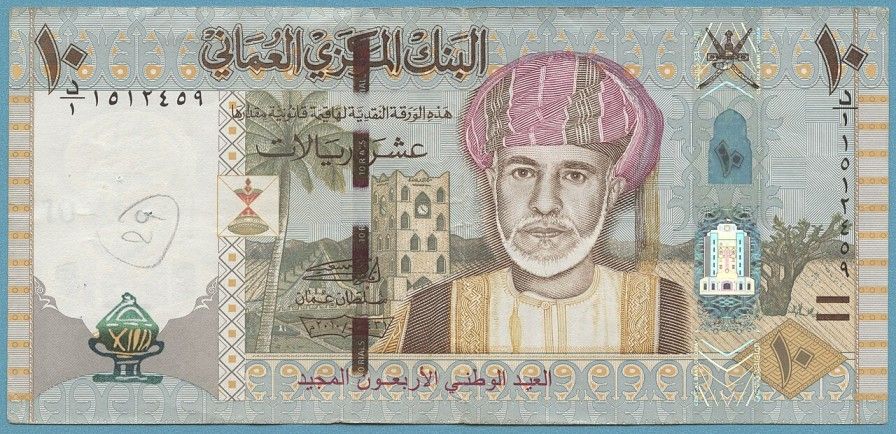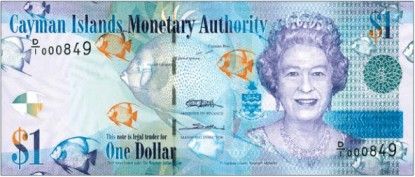
Currencies are money used as a medium of exchange, allowing people to trade goods and services. Each country has its own currency. In Nigeria, we use the Naira (NGN), the U.S. Dollar (USD) in the United States, the Euro (EUR) in many European nations, etc. However, some countries or regions use the same currency.
Understanding different currencies helps give insights into economic stability, international trade, and investment opportunities. They are important because currency values directly impact the global economy, personal finance, and business decisions.
In this article, we will discuss the ten strongest currencies in the world, so you know the currencies with greater values to help you make better decisions when investing and trading.
10 Strongest Currencies in the World
List of the top 10 strongest currencies in the world based on their exchange rates against the US dollar.

1. Kuwaiti Dinar (KWD)

Image Credit: Wikimedia
The Kuwaiti Dinar is always ranked as the strongest currency in the world due to its value being attributed to Kuwait’s oil reserves and also the country’s strong economy.
Exchange Rate: 1 KWD ≈ 3.25 USD (As of November 2024)
Region: Kuwait is a small, oil-rich country located in the Middle East on the northern edge of the Arabian Peninsula. It is known for its vast oil reserves, and Kuwait has one of the highest per capita incomes in the world.
Reason for Strength: Oil Reserved.
2. Bahraini Dinar (BHD)

Image Credit: Wikipedia
Bahrain’s economy is also heavily reliant on oil, and the Bahraini Dinar maintains its strength through monetary policies and economic diversification.
Exchange Rate: 1 BHD ≈ 2.65 USD (As of November 2024)
Region: Bahrain is a small island country in the Persian Gulf, situated to the east of Saudi Arabia and north of Qatar. It was one of the first places in the Gulf region to discover oil, which transformed it into a financial and economic hub. Although it still relies on oil and gas, Bahrain has diversified its economy with strong sectors in banking, finance, and tourism.
Reason for Strength: Oil Reserved.
3. Omani Rial (OMR)

Image Credit: Wikipedia
The Omani Rial (OMR) is Oman’s currency, valued among the highest globally.. It’s divided into 1,000 Baisas and is known for its stability, backed by Oman’s oil-driven economy and strong fiscal policies.
Exchange Rate: 1 OMR ≈ 2.60 USD (As of November 2024)
Region: Oman is a country located on the southeastern coast of the Arabian Peninsula in Western Asia. It is known for its rich history, unique culture, and economic development.
Reason for Strength: Oil Reserved.
4. Jordanian Dinar (JOD)

Image Credit: Jordansko.sk
The Jordanian Dinar (JOD) is the official currency of Jordan, symbolized as JD and subdivided into 1,000 fils. It is one of the strongest currencies in the Middle East, with a stable exchange rate that is pegged to the U.S. Dollar. This helps maintain economic stability in Jordan, which has a small, open economy with limited natural resources.
Exchange Rate: 1 JOD ≈ 1.41 USD (As of November 2024)
Region: Jordan is a country in the Middle East. It is the home to ancient sites like Petra, a UNESCO World Heritage site, and the Roman ruins in Jerash.
Reason for Strength: Despite limited natural resources, Jordan pegged its currency to the USD, creating a stable and strong currency.
5. British Pound Sterling (GBP)

Image Credit: Foreign Currency and Coin
The British Pound Sterling (GBP), also called the Pound, is the official currency of the United Kingdom, including England, Scotland, Wales, and Northern Ireland. The British Pound has long been one of the world’s leading currencies, bolstered by the UK’s financial sector and global trade relationships.
Exchange Rate: 1 GBP ≈ 1.28 USD (As of November 2024)
Region: The United Kingdom (UK) is a country located in Northwestern Europe, made up of four constituent countries: England, Scotland, Wales, and Northern Ireland. The capital city of the UK is London, one of the world’s most influential financial, cultural, and political centers.
Reason for Strength: It is one of the oldest currencies still in use today and is the fourth most traded currency in the world after the U.S. Dollar, Euro, and Japanese Yen.
6. Gibraltar Pound (GIP)

Image Credit: Visa2fly
The Gibraltar Pound (GIP) is the official currency of Gibraltar, a British Overseas Territory located at the southern tip of the Iberian Peninsula, bordering Spain. The Gibraltar Pound is pegged to the British Pound Sterling (GBP), and both currencies are used in Gibraltar, although the Gibraltar Pound is the legal tender within the territory.
Exchange Rate: 1 GIP ≈ 1.28 USD (As of November 2024)
Region: Gibraltar is a British Overseas Territory known for the iconic Rock of Gibraltar, its strategic location at the entrance to the Mediterranean. Its economy thrives based on tourism, financial services, and maritime activities.
Reason for Strength: The Gibraltar Pound (GIP) is strong because it is pegged at par (1 GIP = 1 GBP) to the British Pound Sterling (GBP), which is one of the world’s most stable and widely traded currencies.
7. Cayman Islands Dollar (KYD)

Image Credit: LA Currency
The Cayman Islands Dollar (KYD) is the official currency of the Cayman Islands, a British Overseas Territory located in the Caribbean. The currency is abbreviated as KYD and is subdivided into 100 cents. The Cayman Islands Dollar is one of the strongest currencies in the world, often valued higher than the U.S. Dollar (USD).
Exchange Rate: 1 KYD ≈ 1.20 USD (As of November 2024).
Region: The Cayman Islands is a British Overseas Territory located in the Caribbean Sea, consisting of three islands: Grand Cayman, Cayman Brac, and Little Cayman. The territory is known for its beautiful beaches, clear turquoise waters, and vibrant coral reefs, making it a popular tourist destination.
Reason for Strength: The Cayman Island dollar is strong because it is pegged to the USD.
8. Swiss Franc (CHF)

Image Credit: LFA.ch
The Swiss Franc (CHF) is the official currency of Switzerland and Liechtenstein, and it is abbreviated as CHF (from its Latin name, Confoederatio Helvetica Franc). The Swiss Franc is one of the world’s strongest and most stable currencies, often viewed as a “safe haven” currency due to Switzerland’s political stability, economic strength, and neutral foreign policy.
Exchange Rate: 1 CHF ≈ 1.13 USD (As of November 2024).
Region: Switzerland is located in central Europe. It is famous for its mountains, particularly the Alps, and its pristine lakes, such as Lake Geneva and Lake Lucerne.
Reason for strength: The Swiss Franc is considered a safe haven, meaning investors turn to it during global economic uncertainty or political instability.
9. Euro (EUR)

Image Credit: OMFIF.org
The Euro (EUR) is the official currency of the Eurozone, which comprises 20 of the 27 member countries of the European Union (EU). The Euro is represented by the symbol € and is managed by the European Central Bank (ECB), based in Frankfurt, Germany.
Exchange Rate: 1 EUR ≈ 1.06 USD (As of November 2024).
Region: Eurozone countries include major economies like Germany, France, Italy, and Spain, among others. The 20 countries in the Eurozone collectively represent one of the world’s largest economic areas.
Reason for Strength: It is one of the most widely used and traded currencies in the world, second only to the U.S. Dollar.
10. United States Dollar (USD)

Image Credit: CNBC
The United States Dollar (USD), symbolized by $, is the official currency of the United States of America and is one of the most widely used and traded currencies worldwide. It is also called “greenback” due to the colour of its banknotes, the U.S. Dollar is the primary currency for domestic transactions in the U.S. and a major reserve currency globally.
Exchange Rate: 1 USD ≈ 1 USD
Region: The United States of America (USA), commonly known as the United States (U.S.). The U.S. is one of the world’s most influential nations, known for its cultural, economic, political, and technological impact globally.
Reason for Strength: The USD remains dominant globally, serving as the world’s primary reserve currency for international trade and finance.
Conclusion
The world’s strongest currencies reflect the economic resilience, strategic financial policies, and global influence of the countries that issue them. Most times backed by natural resources, financial sector strength, or political stability, these currencies play a vital role in international markets, offering security for global transactions. For businesses, investors, and travelers alike, understanding currency’s strengths and weaknesses to aid in financial decision-making.
This is a guest post by a contributing partner. Opinions expressed are entirely their own and do not necessarily reflect those of Monierate.com or It employees.
